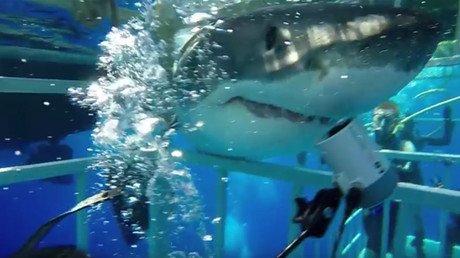1st of its kind: Scientists discover bizarre two-headed shark embryo

Scientists have discovered what they believe could be the first two-headed embryo among egg-laying shark species. The embryo, which is growing in a Spanish lab, also has multiple hearts, stomachs, and livers.
While there have been previous instances when sharks have given birth to two-headed pups, researchers believe this may be the first two-headed shark embryo from the Galeus atlanticus family.
Scientists suspect the deformation is a result of genetics, but are hopeful the discovery will provide insight into the rare condition known as dicephaly – a term which refers to two-headed animals.
The Spanish scientists published their findings in the Journal of Fish Biology, and detailed the catshark’s fascinating body, which included two heads – each with its own mouth – a set of eyes, a brain, gill openings, two hearts, and two sets of stomachs and livers. Despite the duplicate organs, the catshark had just one intestine.
The unique shark was discovered among 797 embryos intended for cardiovascular studies. The fertilized eggs had been collected from adult female sharks in the western Mediterrean from 2005 to 2011, in the months of April and May. They were then transported to a lab at the Spanish Institute of Oceanography.
"We see two-headed sharks occasionally," George Burgess, director of the Florida program for shark research at the Florida Museum of Natural History, told National Geographic. "It's an anomaly, caused by a genetic misfire. There are lots of different kinds of genetic misfires, and most don't make it out of the womb."
In the paper, the scientists acknowledge there have been seven reported cases of conjoined sharks before, but none, that they know of, with two heads from the Galeus atlanticus family. They noted that further research is need to decipher what exactly sparks the phenomenon.














